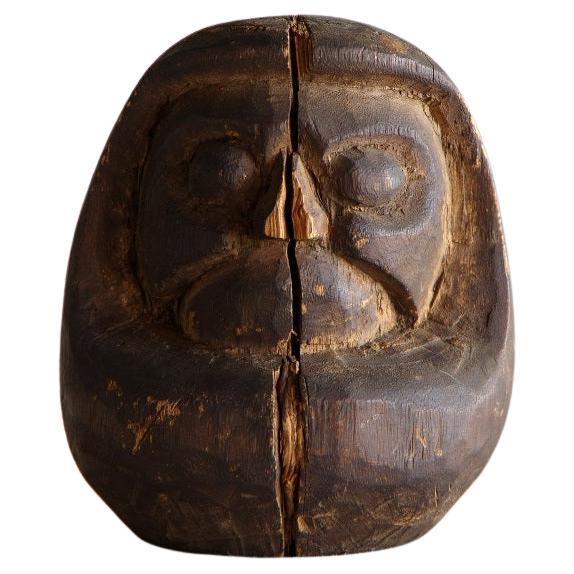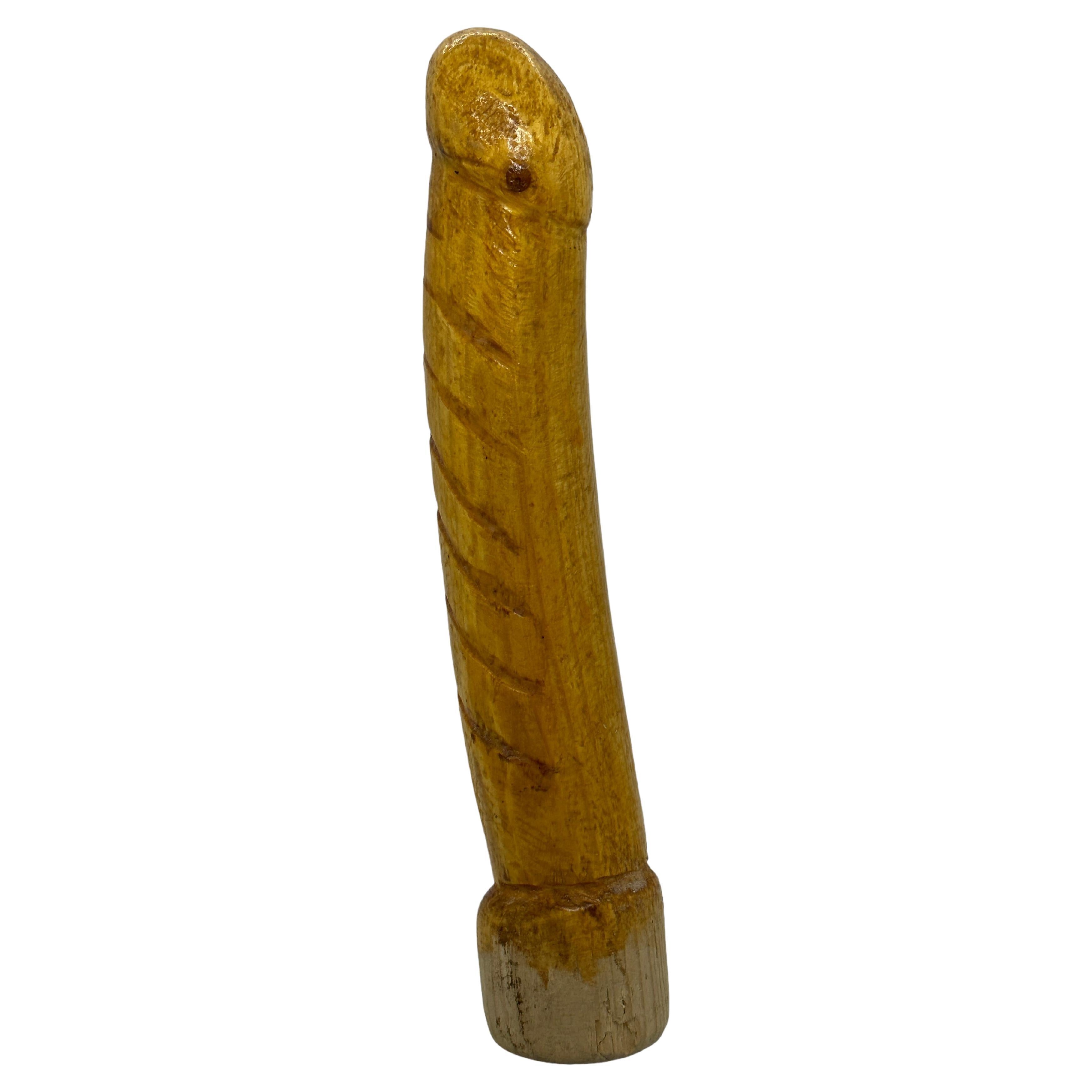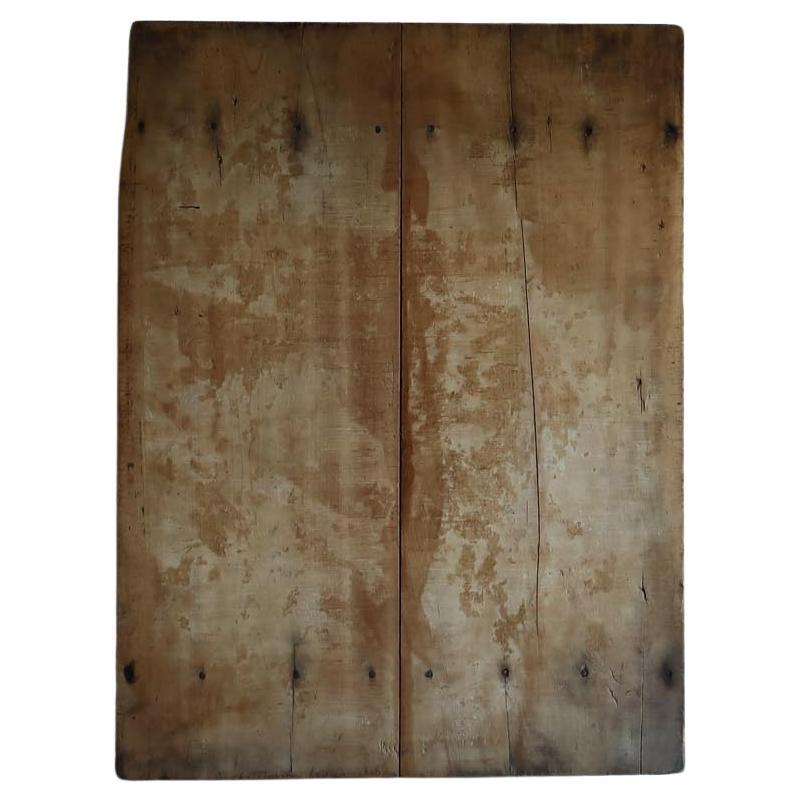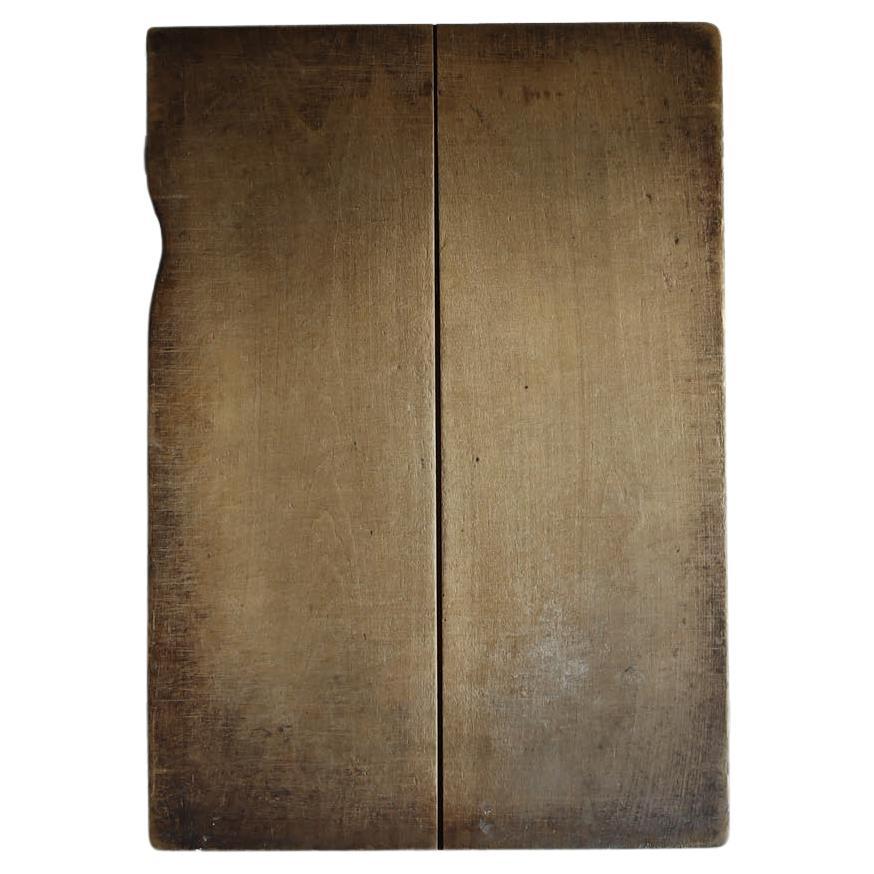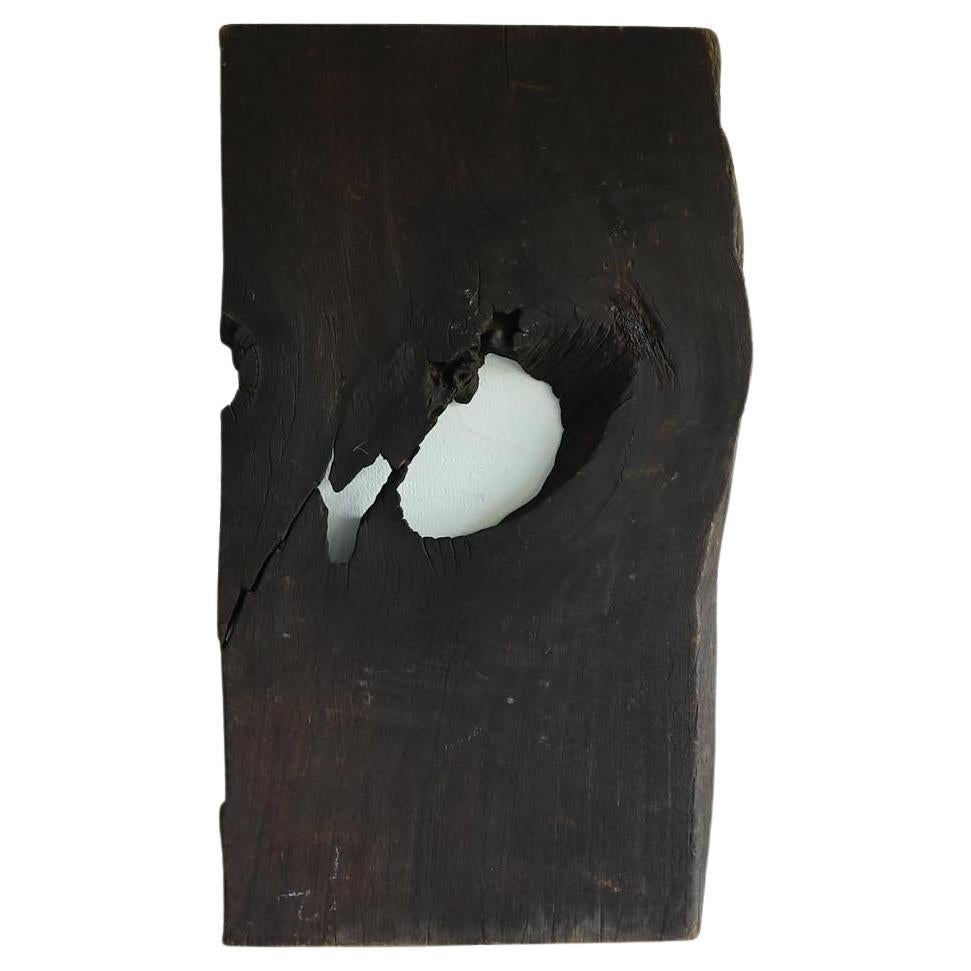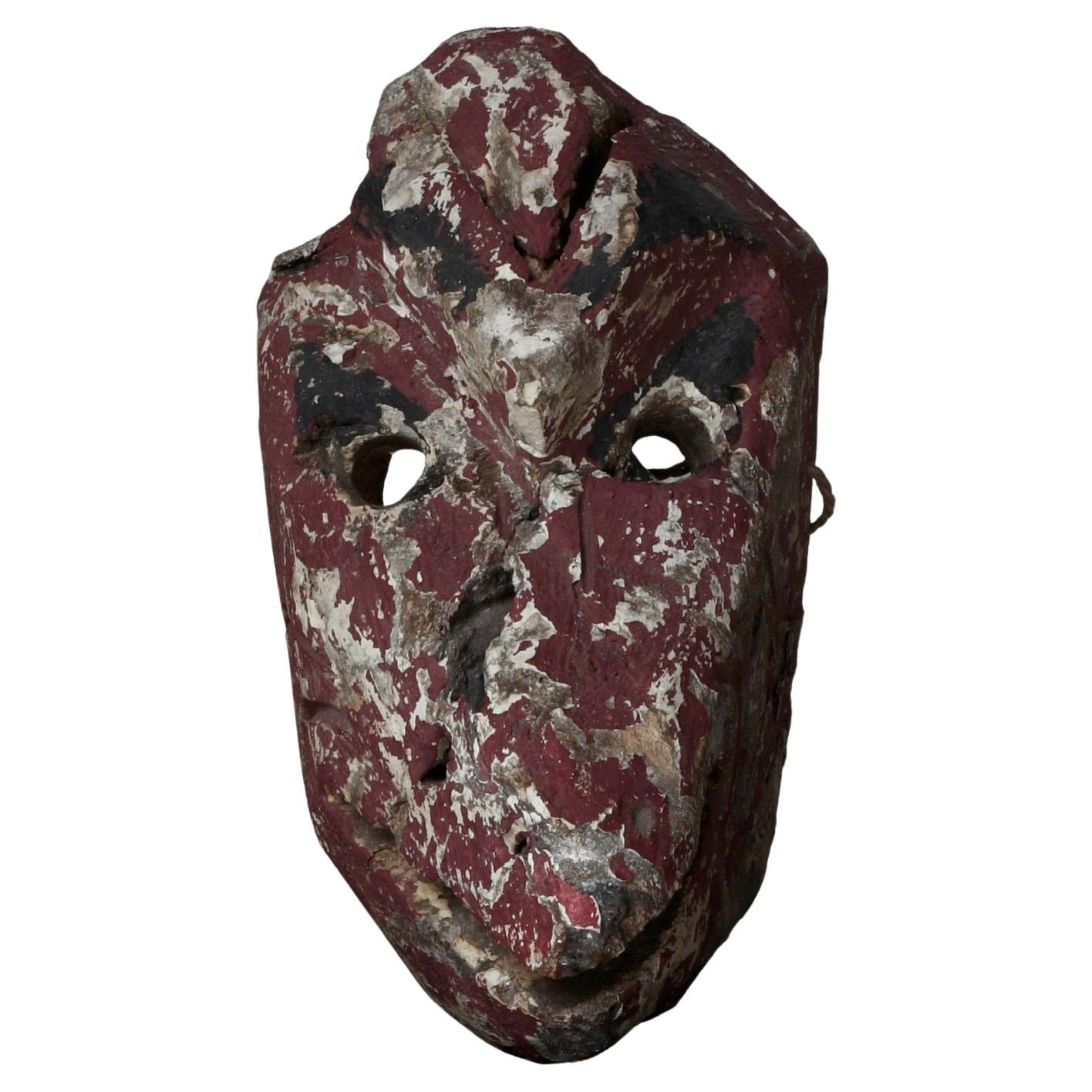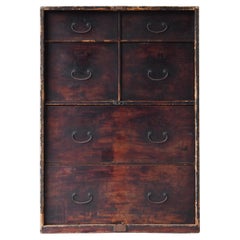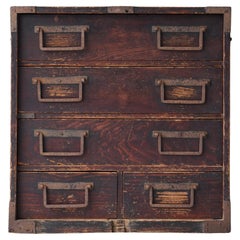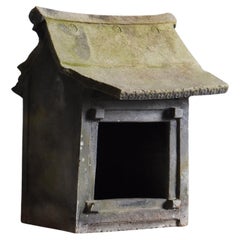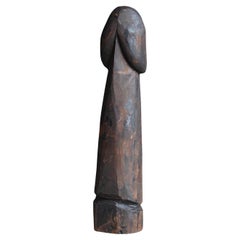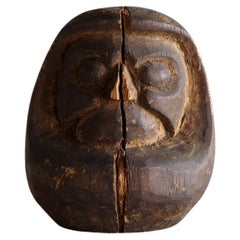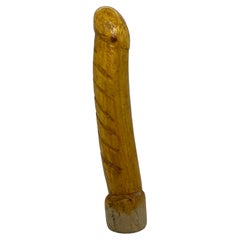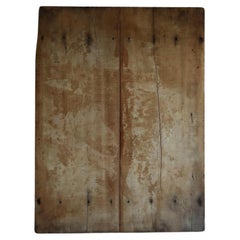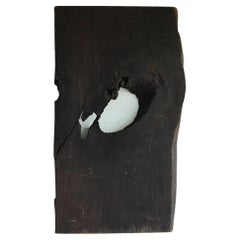Items Similar to Japanese Antique Wood Carving Daruma 1860s-1920s / Sculpture Wabi Sabi Mingei
Want more images or videos?
Request additional images or videos from the seller
1 of 16
Japanese Antique Wood Carving Daruma 1860s-1920s / Sculpture Wabi Sabi Mingei
$950
£720.12
€840.82
CA$1,330.68
A$1,497.91
CHF 792.45
MX$18,579.77
NOK 9,791.59
SEK 9,364.79
DKK 6,272.92
Shipping
Retrieving quote...The 1stDibs Promise:
Authenticity Guarantee,
Money-Back Guarantee,
24-Hour Cancellation
About the Item
This is an old daruma wood pattern made in Japan.
The expression of the wood grain and traces of handwork suggest that it was made between the Meiji and Taisho periods (1860s-1920s). The material used is thought to be solid walnut, and its appearance suggests that it has endured many years of use.
The wooden form of Daruma is the original mold used to make cloth- or paper-covered Daruma dolls. Using this wooden mold, craftsmen apply layers of Japanese paper and other materials, which are removed after drying to complete the body of the Daruma doll. Therefore, the wooden mold itself is not directly handed over to the public, but has served as a “behind-the-scenes” part of the production process. However, this piece still has an overwhelming presence as a sculptural object even after it has completed its role.
The overall form is rounded and stable, characteristic of daruma. The high nose and clear eyes set in the center of the figure give it a dignified impression, and it even has an atmosphere reminiscent of modern art.
The wood has cracks due to years of use, but these cracks have been carefully repaired with plaster. The repair marks are also fascinating and seem to speak of the beauty of the vessel over time. The faint traces of green and black pigments in the details give us an idea of the atmosphere of the production site at that time.
The surface texture, the cracks in the wood, and the feeling of being used are more than mere craft tools; it would not be an exaggeration to say that they are works of art. The quiet appearance of the wooden utensils seems to represent the accumulation of time, bringing both serenity and strength to the space.
It is a miracle that such a tool has survived to this day, and it is truly an "art piece that has been sublimated after its role has been completed.
The spirit of “wabi-sabi” - beauty that dwells in imperfection - certainly lives on in this wooden form.
Weight: 4 kg
______________________________________
Our Philosophy
Objects always tell the truth.
All I can do is just to face with them sincerely and give
them deep affection as much as I can.
There is no boundary of nationalities and of eras in beauty.
But I think now is the time we choose 'Japanese style' and it
will be the best way to remind us of what we are losing
today and to question us about an essence of beauty again.
I hope that you can touch the memories which the objects here have,
feel and think of something invisible but exists undoubtedly.
- Dimensions:Height: 9.65 in (24.5 cm)Width: 8.27 in (21 cm)Depth: 7.88 in (20 cm)
- Style:Meiji (Of the Period)
- Materials and Techniques:
- Place of Origin:
- Period:
- Date of Manufacture:1860s-1920s
- Condition:Wear consistent with age and use.
- Seller Location:Chōsei District Nagara, JP
- Reference Number:1stDibs: LU10403245548202
About the Seller
New to 1stDibs
Joined in the past six months.
5.0
Gold Seller
Premium sellers maintaining a 4.3+ rating and 24-hour response times
Established in 2017
1stDibs seller since 2025
8 sales on 1stDibs
Typical response time: 3 hours
- ShippingRetrieving quote...Shipping from: Chōsei District Nagara, Japan
- Return Policy
Authenticity Guarantee
In the unlikely event there’s an issue with an item’s authenticity, contact us within 1 year for a full refund. DetailsMoney-Back Guarantee
If your item is not as described, is damaged in transit, or does not arrive, contact us within 7 days for a full refund. Details24-Hour Cancellation
You have a 24-hour grace period in which to reconsider your purchase, with no questions asked.Vetted Professional Sellers
Our world-class sellers must adhere to strict standards for service and quality, maintaining the integrity of our listings.Price-Match Guarantee
If you find that a seller listed the same item for a lower price elsewhere, we’ll match it.Trusted Global Delivery
Our best-in-class carrier network provides specialized shipping options worldwide, including custom delivery.More From This Seller
View AllJapanese Antique Large Drawer 1860s-1920s / Tansu Sideboard Wabi Sabi
Located in Chōsei District Nagara, JP
This is a Japanese made drawer storage.
It was made between the Meiji and Taisho periods (1860s-1920s), and is a piece of furniture with a long history that still has a strong presen...
Category
Early 20th Century Japanese Meiji Commodes and Chests of Drawers
Materials
Wood
Japanese Antique Small Drawer 1860s-1920s / Nightstand Tansu Wabi Sabi
Located in Chōsei District Nagara, JP
This is a small drawer storage made in Japan.
The furniture was made between the Meiji and Taisho periods (1860s-1920s) and is made of cedar wood.
Iron is used for the handles, and t...
Category
Early 20th Century Japanese Meiji Commodes and Chests of Drawers
Materials
Iron
Japanese Antique Large Ceramic Shrine 1860s-1920s / Object Wabi Sabi
Located in Chōsei District Nagara, JP
This is an old Japanese pottery shrine (zushi).
It was made during the Meiji and Taisho periods (1860s-1920s), and was mainly placed in gardens to enshrine deities.
The word “zushi” ...
Category
Early 20th Century Japanese Meiji Antiquities
Materials
Ceramic
Japanese Antique Wood Carving Large Penis 1800s-1860s / Sculpture Wabi Sabi
Located in Chōsei District Nagara, JP
This is an old carved large wooden penis statue made in Japan.
It was made during the Edo period (1800s-1860s) and is made of cedar.
In the Tōhoku region of Japan, there has long be...
Category
Antique Late 19th Century Japanese Edo Sculptures and Carvings
Materials
Cedar
Japanese Antique Large Paper Mat "Abstract art" 1860s-1920s / Wabi Sabi
Located in Chōsei District Nagara, JP
This is a very old Japanese matte paper.
It was made during the Meiji period (1860s-1920s) and is very large, measuring approximately 1900 mm x 1420 mm.
The Japanese paper is carefu...
Category
Early 20th Century Japanese Meiji Decorative Art
Materials
Paper
Japanese Antique Primitive Chair 1860s-1920s / Side Chair Wabi Sabi
Located in Chōsei District Nagara, JP
This is an old primitive style chair made in Japan.
Originally used as a threshing mortar, it is a very rare piece that has been improved and made into a chair.
The millstone itself ...
Category
Early 20th Century Japanese Primitive Chairs
Materials
Wood
You May Also Like
Japanese Antique Wooden Daruma, Late Edo Era '1603-1868', Wabi Sabi
Located in Hitachiomiya-shi, 08
This antique daruma was crafted in the Late Edo Era (1603-1868).
Made of wood, it exudes a simple yet unique charm that reflects the cultural essence of its time. The natural textu...
Category
Antique Mid-19th Century Japanese Edo Sculptures and Carvings
Materials
Wood
Wood Carving Penis Figurine Wabi Sabi Object Vintage Asia 1950s
Located in Nuernberg, DE
Adorable unique wood carved figurine statue. we don't know anything about the item, but believe it was made in Japan in the 1960s. Ideal decoratio...
Category
Vintage 1950s Japanese Folk Art Sculptures and Carvings
Materials
Wood
Japanese Antique Wooden Board, "Abstract Sculptures", Wabi-Sabi, Mingei
Located in Katori-Shi, 12
This is a wooden antique board from the Meiji era.
It is made of Japanese cedar wood.
It has a beautiful appearance due to years of use and aging.
It was used as a board for kneadi...
Category
Early 20th Century Meiji Antiquities
Materials
Wood
Japanese Antique Wooden Board, "Abstract Sculptures", Wabi-Sabi, Mingei
Located in Katori-Shi, 12
This wooden antique board is from the Meiji period.
It is made of lauan wood.
Years of use and age have given it a beautiful appearance.
Hang it o...
Category
Early 20th Century Meiji Antiquities
Materials
Wood
Japanese Antique Wooden Board, "Abstract Sculptures", Wabi-Sabi, Mingei
Located in Katori-Shi, 12
This is a wooden antique board from the Meiji era.
It is made of Japanese cedar wood.
It has a beautiful appearance due to years of use and aging.
It was used as a board for kneadi...
Category
Early 20th Century Meiji Antiquities
Materials
Wood
Japanese Antique Tengu's Face / Objet / 1868-1912s / Wabi-sabi Mingei
Located in Iwate-gun Shizukuishi-cho, Iwate Prefecture
This is the old Tengu surface that was used in the Kyushu region of Japan.
It is thought to be from around the Meiji period.
Tengu noodles are said to be an amulet, a blessing, and...
Category
Antique Late 19th Century Japanese Meiji Masks
Materials
Wood
